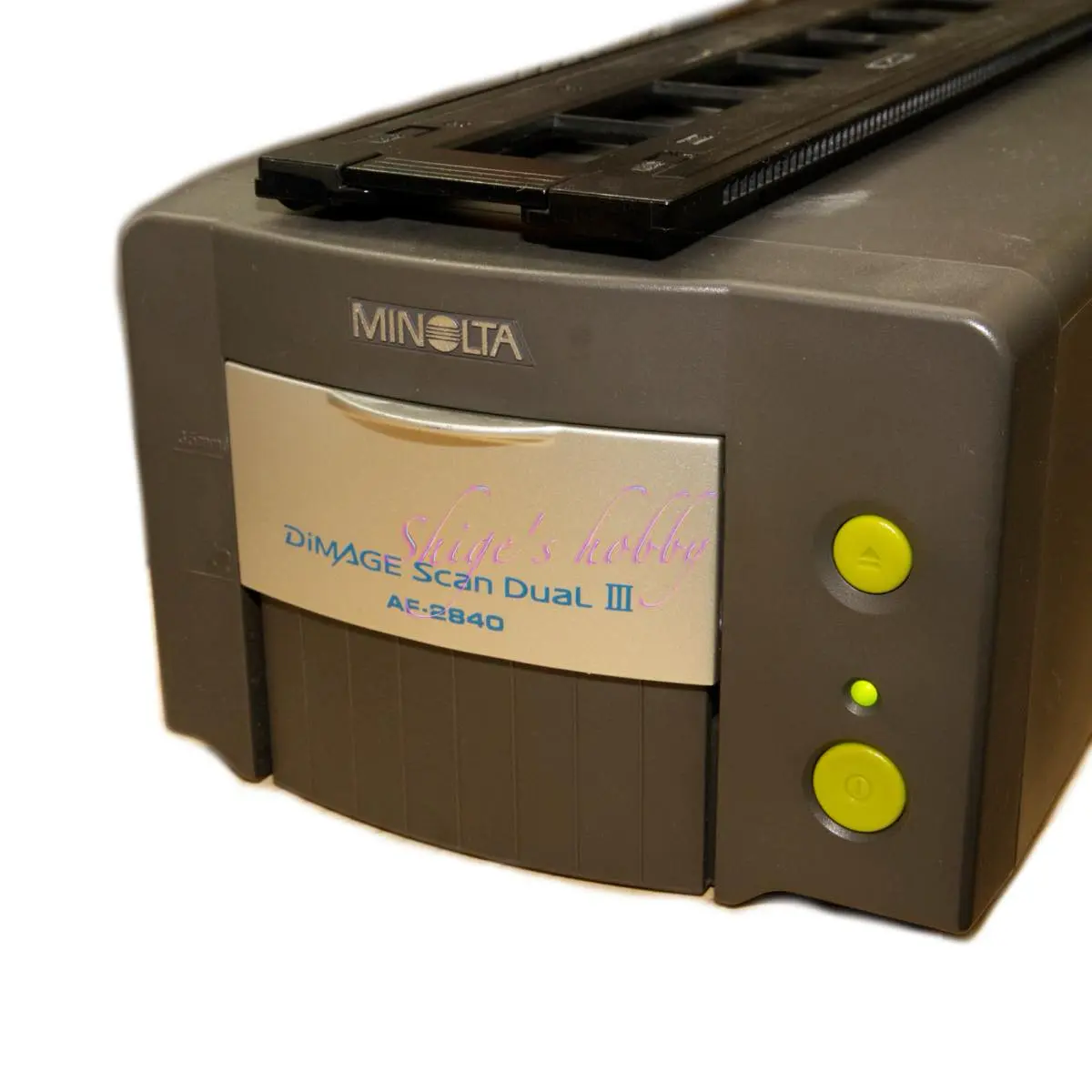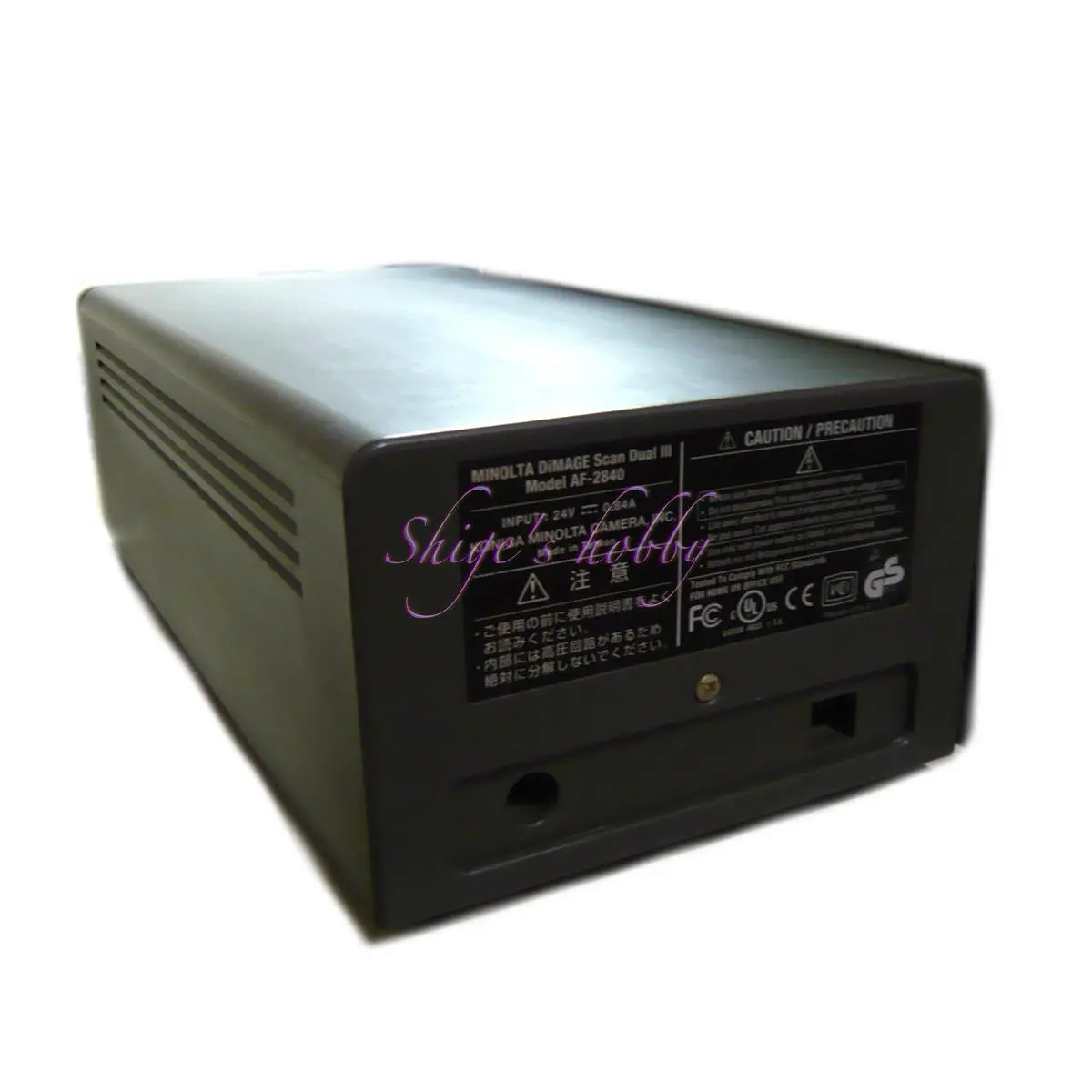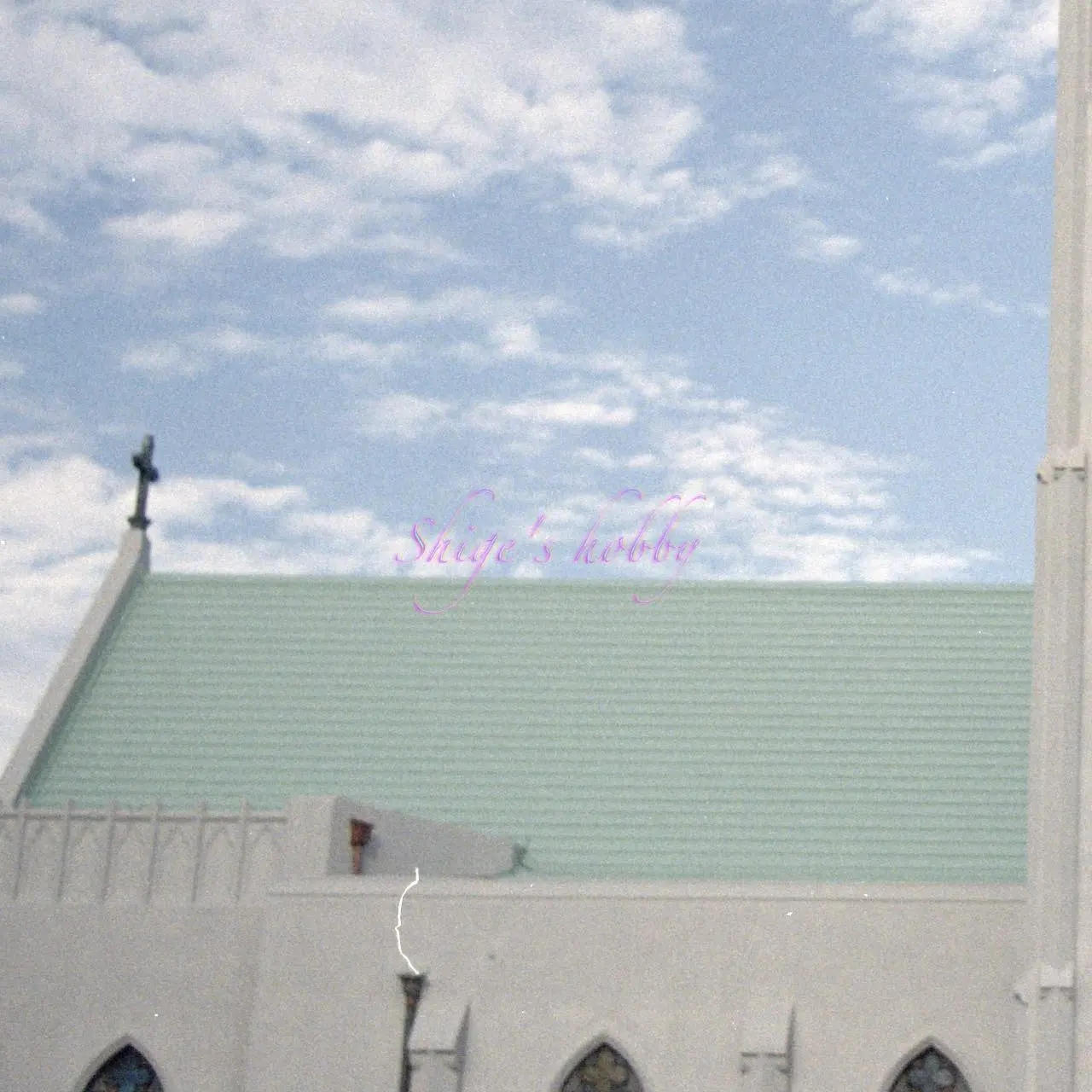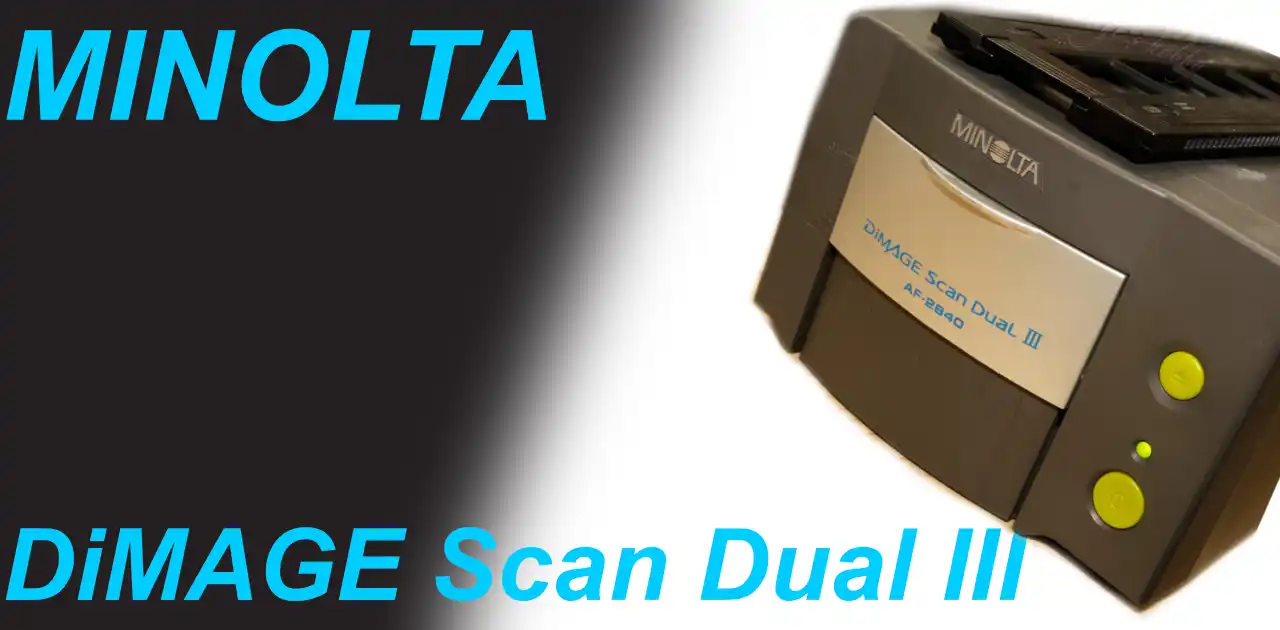A review of the DiMage Dual 3, including the current scanning environment as of 2024.
Table of contents
Gallery
- The film was shot on a LEICA R8 with Kodak ColorPlus 200 and scanned with a DiMAGE Scan Dual III.
Review


1.Overview
The DiMAGE Scan Dual III was released in 2002 and supports USB 2.0 connections.
As the third generation in the Dual series, it had a scanning resolution of 2820 dpi, 16-bit input and output, and a list price of 45,000 yen.
When scanning 35mm film (36.32 x 24.21mm) at 2820 dpi, you can obtain an image with approximately 10 million pixels: 36.32/25.42820=4032 pixels horizontally and 24.21/25.42820=2687 pixels vertically.
A characteristic of Minolta scanners, the film is placed on a film carrier before scanning, and an AC adapter is required to operate the scanner.
For differences in scanner specifications, please see our scanner specification comparison.
2.Usability
The scanning speed of the DiMAGE Scan Dual III was about 12-13 minutes when scanning six slip films continuously at the highest resolution of 2820 dpi using a USB 2.0 connection.
For a 36-exposure scan, it took about an hour and a half, including the time it took to repack the slip films into their plastic frames. Nikon film scanners, which can scan slip films without a film carrier, are superior.
The DiMAGE Scan Dual III has a USB 2.0 port, so it can be connected to any PC with a USB port, regardless of its operating system.
Scanning requires software, and the official scanner software is compatible with Windows up to Windows XP 32-bit and Mac OS X 10.4 Tiger. Yushi distributes software for use with newer versions of Windows OS.
The paid scanning software VueScan is compatible with the latest OS as of 2024. SilverFast version 6.6, another paid scanning software, is compatible with Mac OS X 10.6 Snow Leopard and Windows up to Windows XP 32-bit.
The scan results are sufficient for scanning negative and black-and-white film.
Although I haven’t actually tried it, the resolution may not be sufficient when scanning slide film. If you use slide film extensively, it would be better to choose the higher-end Elite 5400 series.


One thing to note about use is that, as this is an inexpensive film scanner, it does not have a Digital ICE function that removes dust and other imperfections using hardware, so if there is dust or scratches on the film, you will need to fix them yourself from the scanned image. Due to the scanner’s structure, the film side faces up when scanning, so it is best to work in a clean, dust-free environment.
The Dual III I purchased second-hand in 2023 did not come with any accessories other than a film carrier for slip film and an AC adapter, so I have not been able to try framed slide film with this scanner. I sold the Dual III when I purchased the DiMAGE SCAN Elite II and Multi PRO, so I no longer have it on hand.
3.Summary
In conclusion, to sum up the DiMAGE Scan Dual III, it’s a film scanner that’s easy to use with a USB 2.0 connection.
As the scanning surface faces upwards and there is no hardware dust removal function, it’s best to keep the scanner environment dust-free.
Specifications, considerations, etc.
Minolta’s DiImageScan cameras come in three main lines: the affordable Dual; the high-performance Elite model compatible with 35mm and APS film; and the Multi, capable of scanning large-format film.
The Dual does not feature the ICE dust removal function, while the Elite and Multi do. See the table below for the ICE version.
The light source for the older models in the table below is unknown, but models prior to 2000 likely used a three-wavelength fluorescent lamp (hot cathode tube), while models from 2000 onwards used a three-wavelength fluorescent lamp (cold cathode tube), with the Elite 5400 II using a white LED. While the 5400 is listed on murauchi.com as using a three-wavelength fluorescent lamp (cold cathode tube), there is very little information on the 5400 (AF-5400) available, making it difficult to confirm accurate information. The components, including the exterior, appear nearly identical, so it’s possible the Elite 5400 II uses the same white LED.
| Series name | DiMAGE Scan Dual | DiMAGE Scan Elite | DiMAGE Scan Multi |
| Model name | Dual Dual II(AF-2820U) Dual III(AF-2840) Dual IV(AF-3200) | Elite Elite II(AF-2920) Elite 5400(AF-5400) Elite 5400II(AF-5400-2) | Multi(F-3000) Multi II(F-3100) Multi PRO(AF-5000) |
| Resolution (dpi) | 2820(Dual,Dual II,Dual III) 3200(Dual IV) | 2820(Elite,Elite II) 5400(Elite 5400,Elite 5400II) | 2820(Multi,Multi II) 4800(Multi PRO) |
| Image Sensor | RGB 3line CCD | ← | ← |
| light source | Unknown(Dual) Three-wavelength fluorescent lamp (cold cathode) (Dual II, III, IV) | Unknown(Elite) Three-wavelength fluorescent lamp (cold cathode) (Elite II,5400) White LED(5400II) | Three-wavelength fluorescent lamp (hot cathode) (Multi / Multi II) Three-wavelength fluorescent lamp (cold cathode) (Multi PRO) |
| Scanning method | Manuscript Fixation Optics moving flatbed scanning 1-pass scanning | ← | ← |
| A/D converter | 12bit(Dual I,II) 16bit(Dual III.IV) | 12bit(Elite) 16bit(Elite II) 16bit(Elite 5400) 16bit(Elite 5400 II) | Unknown(Multi II) 12bit(Multi II) 16bit(Multi PRO) |
| Output | 16bit | ← | ← |
| Digital ICE | None | Unknown(Elite) ICE 3(Elite II) ICE 4(Elite 5400) ICE 4(Elite 5400 II) | Unknown(Multi) ROC(Multi II) ICE 3(Multi PRO) |
| Connect interface | SCSI(Dual I,II) USB 2(Dual III,IV) | Unknown(Elite) USB 1/IEEE1394(II) USB 2/IEEE1394(5400,5400 II) | Unknown(Multi) SCSI(Multi II) SCSI/IEEE1394(Multi PRO) |
| Auto feeder | 6 | ← | ← |
| Slide scan | Exist | ← | ← |
| Large format | None | ← | あり |
| Power supply | AC adapter | ← | Build in |
| Weight(kg) | 1.5(for All products) | Unknown(Elite) 1.5(Elite II) 2.5(Elite 5400) 1.5(Elite 5400 II) | Unknown(Multi) Unknown(Multi II) 4(Multi PRO) |
| Options | 35mm film FH-U1 Slide SH-U1 | Elite /II 35mm film FH-U1 Slide SH-U1 Elite 5400/5400II 35mm film FH-M20 Slide SH-M20 | 35mm film SH-M2 Slide FH-M1 Broni MH-M1 |
| Price(Yen/No-tax) | Unknown(Dual) 6.48万円(Dual II) 4.48万円(Dual III) 3.5万円(Dual IV) | Unknown(Elite) 9.8万円(Elite II) 10.5万円(Elite 5400) 7万円(Elite 5400 II) | 29.8万円(Multi) 31.8万円(Multi II) 35.8万円(Multi PRO) |
| Release date | 1997(Dual) 2000(Dual II) 2002(Dual III) 2004(Dual IV) | 1999(Elite) 2001(Elite II) 2003(Elite 5400) 2005(Elite 5400 II) | 1998(Multi) 2000(Multi II) 2001(Multi PRO) |
Digital ICE4 ™ and Digital ICE ™ are trademarks and technologies of EASTMAN KODAK COMPANY, USA.
Reference links
- Dimage Scan Dual II ASCII article (Japanese)
- Dimage Scan Dual III ASCII article (Japanese)
- Dimage Scan Dual III Itmedia article (Japanese)
- Dimage Scan Dual IV Konica Minolta Press Release PDF
- Dimage Scan Elite II ASCII article (Japanese)
- Dimage Scan Elete5400 murauchi.com article (Japanese)
- Dimage Scan Elite 5400 II Konica Minolta Press Release
- Dimage Scan Multi AstroArts article (Japanese)
- Dimage Scan Multi II AstroArts article (Japanese)
- Dimage Scan Multi PRO PC-Watch article (Japanese)
- Dimage Scan Multi PRO Itmedia article (Japanese)
Affiliate links

Update history
- 2025.8.18
- 2024.11.21
- 2023.12.24



Be First to Comment